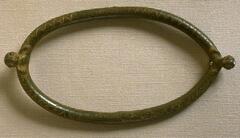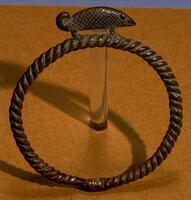33 UMMA Objects
33 UMMA Objects
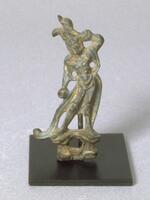
Chinese (Chinese (culture or style))
Dvarapala (guardian figure) from a Buddhist altar
618 – 907
Gift of Mrs. Caroline I. Plumer for the James Marshall Plumer Collection
1963/1.81
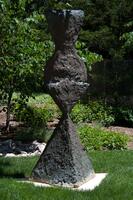
Beverly Pepper (American (North American))
Ternary Marker
1988
Gift of Jack A. and Noreen Rounick
2003/2.78
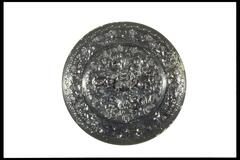
Chinese (Chinese (culture or style))
Mirror, Lion-and-Grape type
618 – 907
Museum Purchase
1958/2.74

Chinese (Chinese (culture or style))
Dvarapala (Buddhist guardian deity)
633 – 666
Gift of Mrs. Caroline I. Plumer for the James Marshall Plumer Collection
1964/2.26
![Flared base with rounded food storage bowl on top. The base is cut with evenly spaced rectangular holes. The lid is incised with a repeating herringbone, or dotted design. The know on the lid is the shape of a Buddhist canopy, or chattra.<br />
<br />
This is a dark blue-gray, high-fired stoneware lidded stem cup. The lid is crowned by a pearl-shaped knob, while both the inner and outer surfaces of lid have traces related to the attachment of the knob to the lid. A v-shaped pattern of engraved dots, made using a sixtooth comb, surrounds the central knob. The cup’s flange slopes inwards and has a sharp edge. The cup body has a horizontal gallery that holds the lid in place. The stem is perforated by rectangular openings, below which is a sharply protruding circular raised band. Traces of rotation and water smoothing are visible on the body and stem of the cup.
<p>[Korean Collection, University of Michigan Museum of Art (2017) p. 59]</p>
Flared base with rounded food storage bowl on top. The base is cut with evenly spaced rectangular holes. The lid is incised with a repeating herringbone, or dotted design. The know on the lid is the shape of a Buddhist canopy, or chattra.<br />
<br />
This is a dark blue-gray, high-fired stoneware lidded stem cup. The lid is crowned by a pearl-shaped knob, while both the inner and outer surfaces of lid have traces related to the attachment of the knob to the lid. A v-shaped pattern of engraved dots, made using a sixtooth comb, surrounds the central knob. The cup’s flange slopes inwards and has a sharp edge. The cup body has a horizontal gallery that holds the lid in place. The stem is perforated by rectangular openings, below which is a sharply protruding circular raised band. Traces of rotation and water smoothing are visible on the body and stem of the cup.
<p>[Korean Collection, University of Michigan Museum of Art (2017) p. 59]</p>](/media/W1siZiIsIjIwMjIvMDkvMjQvOTRoajlpcWRqbV9kZWZhdWx0LmpwZyJdLFsicCIsInRodW1iIiwiMjQweDIwMCJdXQ?sha=27b6314c0d4219a2)
Korean (Korean (culture or style))
Pedestal Bowl with Cover
5th century
Gift of Bruce and Inta Hasenkamp and Museum purchase made possible by Elder and Mrs. Sang-Yong Nam
2004/1.169A&B
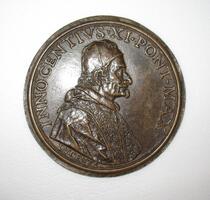
Girolamo Lucenti
Portrait of Innocent XI
1608
Given in memory of Nathan Whitman by the William P. Heidrich family
2008/2.219
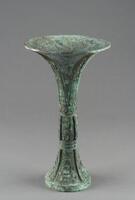
Chinese (Chinese (culture or style))
Gu (libation goblet, one of a pair with 1948/1.118)
8700 BCE
Bequest of Margaret Watson Parker
1948/1.117
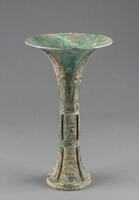
Chinese (Chinese (culture or style))
Gu (libation goblet, one of a pair with 1948/1.117)
8700 BCE
Bequest of Margaret Watson Parker
1948/1.118
Loading…
